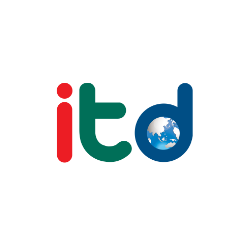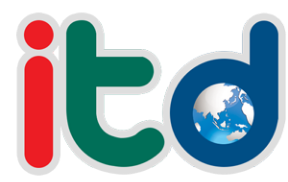Background
Technology and its applications, is a source for advancing socio-economic progress. According to Schumpeter, economic progress can only be achieved through innovation by means of technological advancement. Hence, technology and innovation are interlinked. In the recent UNESCO Science Report 2018 mentioned that technology autonomy will be a vital asset especially for developing countries, in securing their future progress.
Today, technology is reshaping the global economy in many facets of human activities especially in international trade. This is especially true in the case of general-purpose technology which disrupts and opens up overlooked and unserved demands/needs. The special nature of general purpose technology has been its ability to change the fundamental ways we do and live. This was well described by Thomas L. Friedman, the three time Pulitzer winner, when he released one of the most influential book of the 21st century entitled “The World is Flat 3.0” According to him, our perception and understanding has dramatically changed with respect to how we experience reality and transact with them. He explained that we no longer live in a physical world but rather within the technology landscapes which has already transformed the very foundation of humanity by means of generating countless opportunities simply by changing our relationship with time and space. This has shifted our minds (mental model) to another reality, which some expert termed as cognitive surplus. Imagining the unimaginable. Thomas Friedman purports his observation of humanity gradual shift since the fall of the Berlin Wall in 1999 to the present. Many visionary leaders surmised that the current state of play of humanity as one large scale social experiment with technology at the center of these developments.
While we may celebrate technology, in certain parts of the world, the idea of technology raises conflict.
The current trade tensions between the two largest economies of the world is based on technology and the race for supremacy in technology advancement i.e. technology ethnocentrism and autocracy. This race we believe is just the tipping point of what the future international trade challenges will come to play. With one side purporting to the need for greater autonomy and control of technology and the other the need for greater democratization of technology and innovation (diffusion).
On a parallel view, the introduction of superior intelligence powered by software and proprietary algorithm, are by default making choices for us without our consent nor knowledge. For example, thanks to artificial intelligence (AI) we will have the opportunity to automate mundane work and operation or to solve complex problems which was never ever possible before. Creating new opportunities for business and careers for the future. While technology will be a great integrator, it is also a great divider. It can connect everyone (time and space) and everything together while also being the great power to displace people and humanity, both literally and figuratively
Challenges in the 21st Century
- Creation of 60 million jobs or more, by 2030
- A global longevity society (effects of aging society)
- International trade growth by at least twofold by 2030 (to eliminate poverty and inequality
- Paris Accord commitments, 2% by 2045
- Inclusive economic development
- Social policy and psyche of widening inequalities
This year’s 2019 Regional Trade and Development Forum, marks the 19th Anniversary of ITD, will explore for the very first time, the topic of technology in trade. The focus will be to understand how emerging tensions (real or otherwise) resulting from effects of both trade and technology will impact our governance models in a human vs artificial intelligence engineered reality discussion. The conversation will be further guided by the deliberation of the 2019’s G20 Osaka Summit.
Hence, the forum is delivered in four connected sessions. Beginning with the following:
- Session 1, will explore the current opportunities and threats of technology by setting the context of how current social and economic impact of technology in trade have resulted in the following phenomena: demonetization, unbundling effects, technology convergence, negative interest rates, e-migration and cognitive surplus.
- Session 2, will discuss the current and emerging solutions coming into play to address these phenomena.
- Session 3, will draw upon the discussion in the previous two sessions and conclude by addressing the challenges through scenario visioning possible parallel futures and the way forward for policy makers.
- Session 4, will examine initiatives that help build capacity of individual countries in the region in trade and development, a case study on the benefit of Siam fighting fish in digital market of ASEAN, a legal framework on the application of digital technologies to agriculture, and the application of information technology to reduce the impacts of disasters on trade and development.
2 September 2019
Venue: Ballroom, Shangri-La Hotel, Bangkok
Materials
- Dr.Syed Kazi
- Duangthip Chomprang
- John C. Havens
- Prof.Dr. ToshioObi
- Sara Elder
- Xiang Bing
- Dr.Amonrat Sermwatanakul
TRADE AND DEVELOPMENT REGIONAL FORUM 2019 “Trade, Technology and Future Tension: Limitless Opportunities and Threats”





